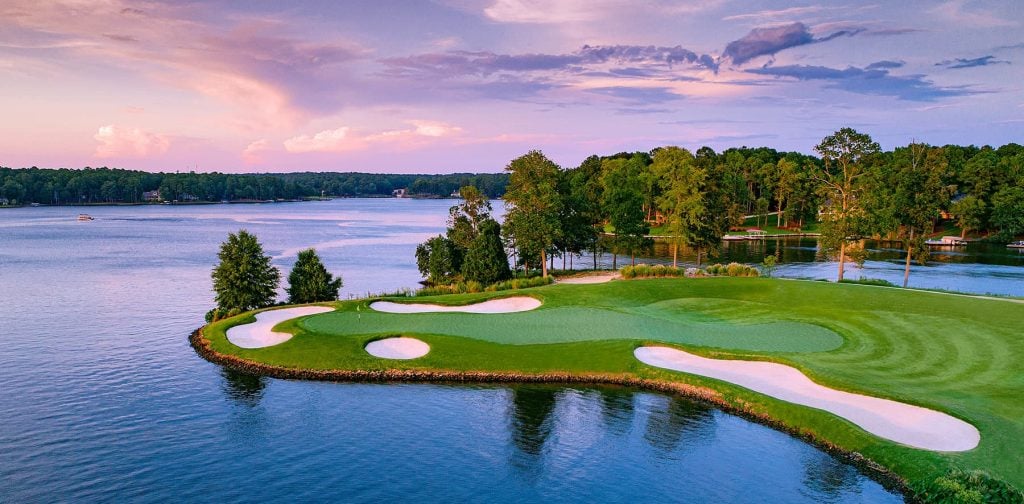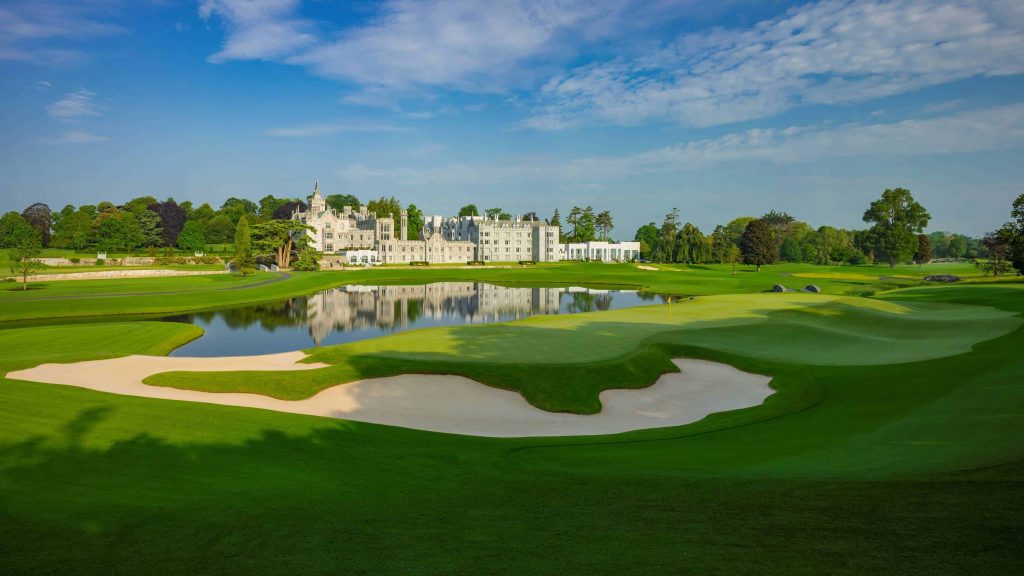How many acres for a golf course
Punto clave:
- The size of a golf course is influenced by factors such as the length and difficulty of the course, the size of the practice range and clubhouse, and other minor factors.
- The average acreage for different types of golf courses varies, with standard 18-hole courses typically requiring more land compared to executive, 9-hole, and par 3 courses.
- Examples of golf course acreage can be seen in case studies of private golf facilities and other existing courses.
Introduction
When it comes to analyzing data, categorization plays a crucial role. In this section, we will explore the MECE (Mutually Exclusive and Collectively Exhaustive) framework and the significance of categorizing data for effective analysis.
By understanding how to organize and structure data, we can unravel valuable insights and make informed decisions. So let’s dive into the world of data categorization and discover its power in unlocking meaningful information.
Explanation of the MECE framework
El MECE framework is a structured method for categorizing data without overlap. It helps to organize complex information and make it easier to analyze.
For golf courses, the MECE framework can break down various factors that influence acreage needed. One category could be course length and difficulty. This includes distance between holes and complexity of design. Another category looks at size of practice range and clubhouse. Plus, environmental conditions and desired difficulty of course.
By using this framework, designers and developers can assess each factor and make sure nothing is overlooked. It makes it easier to understand how these elements affect golf course size.
We will look at length and difficulty, practice range sizes, and environmental conditions. Utilizing the MECE framework, we aim to provide a comprehensive understanding of how many acres are needed for a golf course.
Factors Affecting Size of a Golf Course
Factors affecting the size of a golf course will be explored, analyzing the length and difficulty of the course, the size of the practice range and clubhouse, and other minor factors that play a role in determining the ideal acreage needed.

Length and Difficulty of the Course
The length and difficulty of a golf course have a huge impact on the playing experience. Distance between holes is a key factor. It can make the round either more challenging or enjoyable. The complexity and design of the course also counts. Hazards, undulating terrain, and narrow fairways can increase the challenge level.
Let’s look at the factors that influence length and difficulty in a table:
| Factors | Influence |
|---|---|
| Distance between holes | Dictates how far players must travel from one hole to another |
| Course complexity | Determined by strategic design elements |
Golf course designers aim to create courses with the right balance between challenge and enjoyment for different skill levels. Plus, environmental conditions like wind direction and slope gradients can add even more difficulty. Whether the course is for recreational or competitive play may also affect the desired difficulty level.
Finally, the practice range and clubhouse are also important. They can make or break a golf course, similar to forgetting your putter.
Size of Practice Range and Clubhouse
The size of the practice range and clubhouse is an important factor when planning a golf course. Golfers need enough space to work on their swings and the clubhouse should have facilities like locker rooms, dining areas, and pro shops.
The reference data states that the practice range and putting green need specific space. Golfers should be able to hit balls without feeling cramped. The size of the clubhouse should be sufficient to include amenities that will enhance the golfer experience.
A case study of a golf facility illustrates the importance of careful planning to allocate space for each zone. Variations in acreage can also be seen in different types of courses. Executive courses (80-100 acres) are designed for shorter play time with par 3 holes, whereas larger standard 18-hole courses (120-200 acres) are available.
Choosing a golf course is similar to choosing a spouse – it’s about finding the right size and difficulty level.
Other Minor Factors
When looking at the size of a golf course, there are minor factors which must be taken into account. These include environmental conditions, desired difficulty level, and other unique details.
Environmental conditions involve things like weather patterns, soil conditions, and ecological impact. The desired difficulty level covers aspects such as targeting experienced players, a challenging course layout, and hazards and obstacles.
Other peculiar details include the availability of water sources for irrigation, zoning regulations, and potential expansions or modifications. Although these may not be major factors, they still contribute to the overall analysis of how many acres are required for a golf course.
Average Acreage for Different Types of Golf Courses
On average, different types of golf courses require varying amounts of acreage. From standard 18-hole courses to executive and par 3 courses, each sub-section in this article will explore the average acreage needed for different types of golf courses. So, if you’ve ever wondered how many acres your favorite golf course occupies, you’re in for some interesting insights ahead.

Standard 18-Hole Golf Course
A common 18-hole golf course is well-known. It normally spreads 120 to 200 acres. This acreage depends on the length and difficulty of the holes. Plus, the complexity of the course also influences size. It may need more land for several features and challenges.
The acreage also takes into account the par 3s, par 4s, and par 5s. This adds variation to the game. Executive golf courses have a range of 80 to 100 acres, with a total par value of 36. 9-hole courses are half the size of 18-hole courses. They need around 80-100 acres.
These examples give an idea of the sizes. But, there are minor factors too. Environmental conditions may affect the layout and difficulty. Demographics and target player profiles may result in smaller par-3 courses, ranging from 20 to 40 acres. These are made to engage younger players.
Executive Golf Courses
Executive golf courses, or par 3 courses with a par of 36, are usually smaller than 18-hole courses. They span from 80 to 100 acres, providing a shorter playing time. These courses are designed for golfers who don’t have the time or ability to play a full round on a larger course.
The acreage of executive golf courses depends on the number of holes, design, and extra facilities. They provide challenging gameplay with strategic hole placements and varying distances between holes. Despite their small size, they still offer lots of fun!
These courses also have driving ranges and putting greens. Plus, clubhouses are included in their limited acreage, so golfers can access amenities during their visit.
Executive golf courses offer an enjoyable experience for experienced and novice golfers alike. With their shorter playing times, compact layouts, and practice facilities, they are a great option for quick games or improving skills in a convenient environment.
A 9-hole golf course is approximately half the size of an 18-hole course, ranging from 80-100 acres. Perfect for those who want a fun, shorter game!
9-Hole Golf Courses
Nine-hole golf courses are the perfect size, ranging from 80 to 100 acres. Plus, many are designed as par 3 courses with each hole having a par score of 3, and they take up less space, between 20 and 40 acres!
These courses are great for younger players and beginners, as the shorter playing time and smaller size is less daunting.
Golf clubs can use these courses to serve a wider audience and optimize land usage. Additionally, adding amenities like practice ranges or clubhouses will make the course even more appealing, drawing in more players.
Par 3 Golf Courses
Par 3 golf courses have smaller acreage than other types of courses. This means they take up less land, making them great for urban areas or places with limited space. Despite their size, these courses still provide a fun and challenging game.
Players will find strategically placed bunkers, water hazards, and undulating greens to keep them on their toes. Par 3 courses are also perfect for golf beginners and experienced players looking to practice their short game.
Architects can get creative with the design of par 3 courses. They have the flexibility to create innovative layouts within a confined space. This could mean elevated tees and island greens for an exciting and difficult playing experience.
Examples of Golf Course Acreage
From a private golf facility to various examples, let’s dive into the world of golf course acreage and discover the various land sizes required for different types of golf courses. Uncover the case study of a private golf facility and explore other intriguing examples that highlight the diverse acreage needed for these sprawling sporting landscapes.
Case study: Private Golf Facility
A private golf facility is a valuable case study for its design and size. Five distinct zones are carefully curated and considered when creating the hole routing. Strategically placing each hole provides an optimal playing experience and uses available space.
The size of a private golf facility is based on several key factors. Difficulty level is usually higher, to cater to experienced players, and requires more acreage for water hazards, bunkers, and undulating terrain.
The practice range and clubhouse facilities also take up space. The range for warming up and putting greens for honing skills. Then the clubhouse with locker rooms, dining areas, and pro shops.
Environmental conditions like climate, vegetation, and topography must be taken into account with the size.
MECE framework and the factors listed help create a unique haven for golfers to enjoy the sport. Looking for something smaller? Par 3 courses are like fun-sized candy bars of golf! Perfect for a quick but satisfying round.
Other Examples
Golf course sizes vary, not only from location to location, but also within the same area. Length of course, size of practice range and clubhouse, environmental conditions and difficulty level all affect size.
For instance, mountainous regions may have smaller courses due to limited space. Conversely, coastal areas may have larger courses. Variations in acreage can also be seen between hole lengths. Longer holes need more acreage than shorter ones.
When analyzing size, consider MECE (Mutually Exclusive and Collectively Exhaustive). Break down data into key factors and analyze each category.
Tip: Analyze not only acreage, but also the overall layout and features of each course.
Conclusion
The acres needed for a golf course are based on various factors. Such as the number of holes, design layout, and other features. Professionals must think of these elements to find the best land size.
The number of holes is important. An 18-hole course usually requires a minimum of 150 acres. This allows space for the fairways, greens, and tees. The layout design also matters. A well-designed course should have natural elements and obstacles, meaning more land. Plus, amenities like practice areas, clubhouses, and parking areas should be included.
Extra details can influence the acreage. Things like topography, vegetation, and water bodies should be considered. Also, maintenance facilities, paths for carts, and buffer zones near residential areas need to be taken into account. By considering these factors, golf course planners can use land efficiently.
A few suggestions can help. Shared facilities, such as practice areas or clubhouses, with nearby courses can help reduce land. Innovative design strategies, like multi-tiered greens or shared fairways, can make the layout better and use less land.
Utilizing native plant species and renewable energy sources can reduce environmental impact and free up land. By using these suggestions, planners can provide a great golfing experience while using less land.
In summary, golf course planners must consider many factors to determine the optimal land size. They must also take into account unique details, like topography, vegetation, and water bodies. They should also use shared facilities, innovative design strategies, and sustainable practices to minimize land usage and environmental impact while still providing a great golfing experience.
Some Facts About How Many Acres for a Golf Course:
- ✅ The typical size of a golf course is around 160 acres, including a practice area and clubhouse. (Source: GolfSpan)
- ✅ Executive golf courses are smaller, ranging from 80 to 100 acres, and usually have a par of 36. (Source: GolfSpan)
- ✅ A 9-hole golf course is typically half the size of an 18-hole course, so it would be around 80-100 acres. (Source: GolfSpan)
- ✅ Building just one golf hole or a small loop of holes on private property requires less land, with the famous par-3 12th hole at Augusta National Golf Club sitting on just over 1.5 acres. (Source: Golf Course Architecture)
- ✅ Factors that affect the size of a golf course include the length and difficulty of the course, the size of the practice range and clubhouse, and the design of the course. (Source: GolfSpan)
FAQs about How Many Acres For A Golf Course
How many acres are needed for a maximum length golf course?
A maximum length golf course can require over 350 acres to accommodate the long fairways and challenging holes.
How does the size of a golf course compare to a football field?
One acre is slightly smaller than a football field, so a golf course typically ranges from 120 to 200 acres.
What is the total acreage of a standard 18-hole golf course?
The total acreage of an average 18-hole golf course in the US is around 150 acres, with 100 acres of maintained turfgrass.
How many acres are needed for an 18-hole par 3 golf course?
An 18-hole par 3 golf course only requires 20 to 40 acres of land due to the shorter distances between holes.
How many acres are typically needed for a 9-hole golf course?
A 9-hole golf course typically requires 60 to 100 acres, depending on factors such as the number of pars and the presence of a driving range.
What factors contribute to the size of a golf course?
The size of a golf course is influenced by factors such as the number of holes, the length and difficulty of the course, the size of the practice range and clubhouse, and the overall design of the course.







